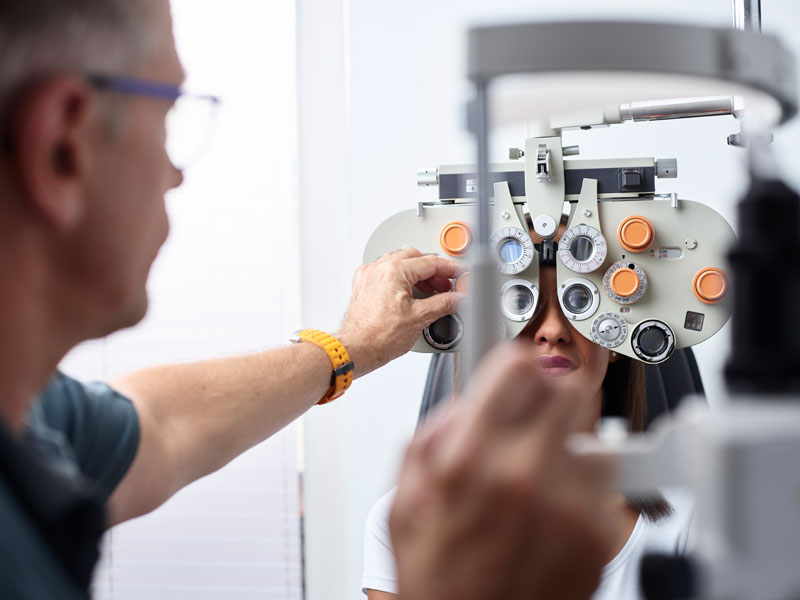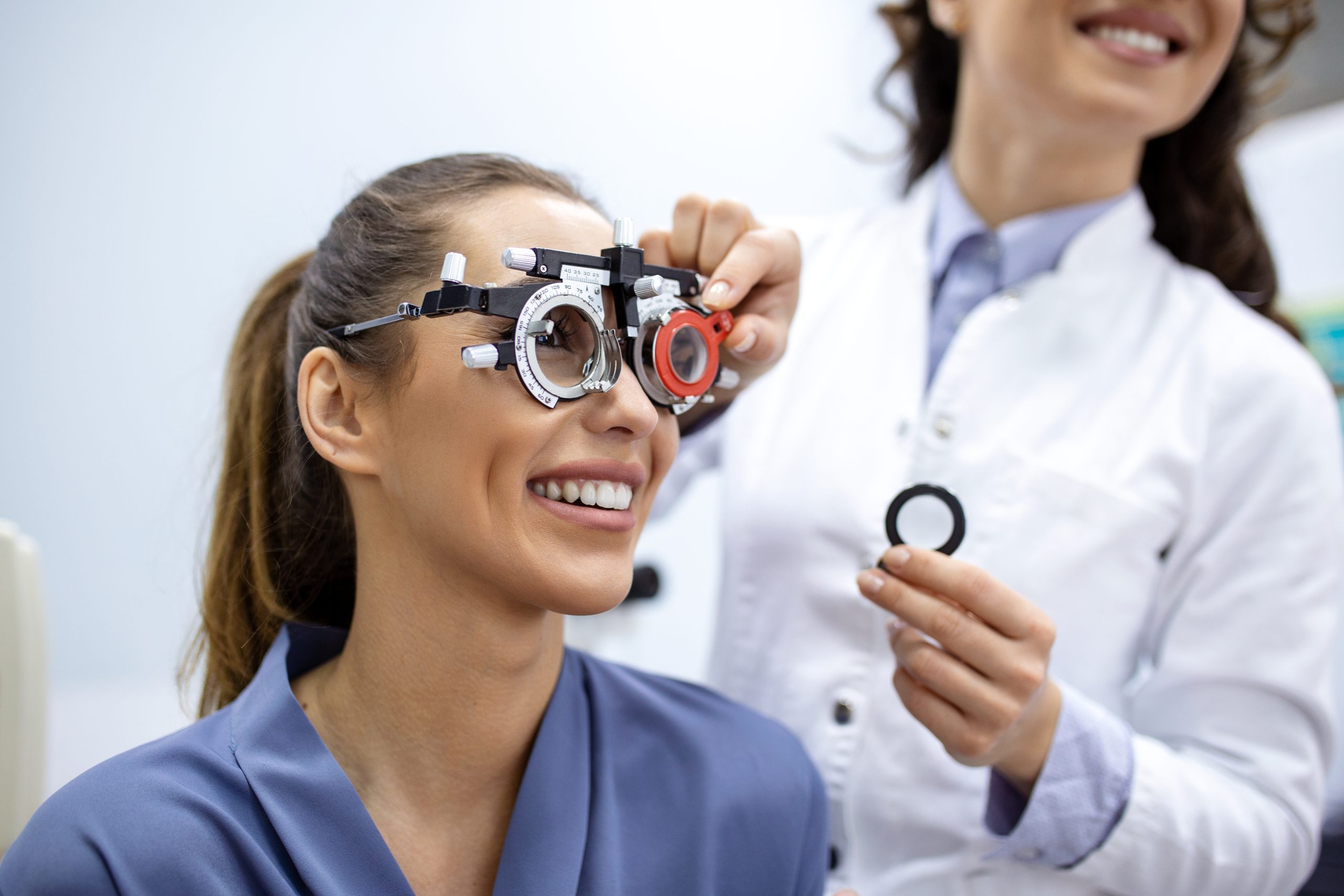Just How an Eye Doctor Can Change Your Vision Health in Chino
Just How an Eye Doctor Can Change Your Vision Health in Chino
Blog Article
Exploring the most up to date Technical Improvements in Optometry and What They Mean for Optometrists
From the precision of Optical Comprehensibility Tomography to the nuanced understandings provided by AI-driven analysis devices, these developments are establishing brand-new requirements in client evaluation and treatment. As these innovations permeate the practice, optometrists are encountered with the challenge of welcoming these tools to boost person end results.
Developments in Diagnostic Equipment
Advancing the field of optometry, technologies in analysis devices have revolutionized the means eye care specialists assess and diagnose ocular problems and visual disabilities. The past decade has experienced considerable technological improvements, allowing even more precise and detailed examinations. Optical Comprehensibility Tomography (OCT), for instance, supplies high-resolution cross-sectional photos of the retina, enabling the early detection of illness such as glaucoma and age-related macular degeneration. This non-invasive imaging method has actually become indispensable in modern optometric method.
One more key technology is the intro of innovative corneal topography systems, which map the surface curvature of the cornea with accuracy. These devices are particularly valuable for suitable get in touch with lenses and identifying corneal problems. Furthermore, digital retinal imaging has actually changed conventional ophthalmoscopy, using detailed, breathtaking sights of the retina that assist in detailed aesthetic exams.
The growth of wavefront aberrometry has actually also been critical, enabling the evaluation of refractive mistakes with unmatched precision (Eye Doctor). This innovation assists in personalizing rehabilitative lenses and improving surgical end results for refractive surgical procedures. Jointly, these analysis improvements equip optometrists to supply exceptional patient treatment, making certain very early intervention and tailored therapy approaches, ultimately boosting visual health end results
AI in Patient Administration
Structure on the foundation of advanced diagnostic devices, the unification of fabricated intelligence (AI) in individual administration stands for a transformative jump for optometry. AI systems are increasingly used to boost performance, precision, and personalization in person treatment.
Moreover, AI-driven systems assist in structured patient communications and management processes. Automated organizing, virtual assessments, and individualized follow-up strategies not only boost client contentment yet likewise optimize time monitoring for practitioners. These systems can triage clients based upon the urgency of their problems, making sure that those in critical need receive prompt interest.
Moreover, AI enhances decision-making by supplying eye doctors with evidence-based suggestions and treatment paths. By incorporating data from electronic health documents, AI tools provide understandings that notify medical decisions, decreasing the danger of errors and enhancing person outcomes. As AI continues to develop, its function in client monitoring will likely broaden, reshaping the landscape of optometric treatment.
Developments in Retinal Imaging
In the realm of optometry, retinal imaging has actually witnessed amazing technological improvements that are improving analysis abilities and patient treatment. Advancements such as Optical Comprehensibility Tomography (OCT) and fundus digital photography have reinvented how optometrists evaluate the retina and visualize.
Enhanced imaging modalities like OCT angiography are further refining analysis precision. This non-invasive method maps blood circulation in the retina, supplying critical insights into vascular health without the demand for dye shots. In addition, adaptive optics modern technology is being incorporated into retinal imaging systems to fix ocular aberrations, supplying unmatched picture clearness. Such improvements promote the recognition of min retinal modifications that might symbolize illness progression.
Furthermore, developments in expert system are boosting retinal imaging by enabling automated evaluation of big see this website datasets. These systems aid optometrists in recognizing patterns a sign of pathology, consequently enhancing diagnostic precision and efficiency. Jointly, these innovations are transforming retinal imaging into a keystone of contemporary eye treatment, boosting results and increasing restorative opportunities.
Teleoptometry's Expanding Duty
Teleoptometry is progressively becoming an essential element of eye care, driven by advancements in electronic communication and analysis tools. This is specifically useful in underserved and country locations where access to specialized eye treatment is often restricted.
The combination of synthetic knowledge (AI) additional improves teleoptometry, making it possible for the analysis of visual data and aiding in the discovery of ocular problems such as glaucoma and diabetic retinopathy. AI-powered formulas can swiftly translate complicated imaging information, giving optometrists with important understandings that bolster scientific decision-making.
Moreover, teleoptometry sustains continuity of treatment through seamless combination with electronic health records (EHRs), permitting optometrists to keep extensive patient histories. This makes sure that individuals obtain customized and regular care even when speaking with various professionals.
Regardless of these benefits, challenges continue to be, consisting see this of making certain information safety and security and managing patient assumptions. However, teleoptometry represents a considerable stride towards even more accessible, effective, and patient-centered eye care. As innovation advances, its role is positioned to expand further.

Future Patterns in Eye Care
A myriad of innovative trends is established to reshape the future of eye treatment, driven by technical developments and the developing needs of clients. One considerable trend is the integration of man-made knowledge (AI) in diagnostics, which guarantees to enhance the precision and performance of eye assessments. AI algorithms can examine vast amounts of information from retinal photos, possibly discovering conditions like diabetic retinopathy and glaucoma earlier than typical methods.
Additionally, personalized medication is acquiring grip in optometry, with hereditary testing notifying personalized treatment strategies. This approach intends to enhance client end results by tailoring treatments to specific genetic profiles. Wearable modern technology, such as clever contact lenses, is also imminent, using real-time surveillance of intraocular stress or glucose degrees, therefore providing continuous understandings right into ocular and systemic health and wellness.
The adoption of augmented fact (AR) and virtual truth (VR) in training and person education and learning is an additional emerging pattern. These modern technologies supply immersive experiences that can boost understanding and abilities both for eye doctors and patients. As these trends develop, optometrists need to remain abreast of technological advancements to offer cutting-edge care, guaranteeing enhanced client outcomes and satisfaction in the dynamic landscape of eye treatment.
Final Thought

Collectively, these diagnostic advancements empower eye doctors to deliver remarkable person care, ensuring very early treatment and customized therapy approaches, ultimately boosting aesthetic health and wellness results.

As these modern technologies proceed to progress, optometrists must adjust and integrate them right into practice, eventually enhancing operations effectiveness and boosting the requirement of eye treatment delivered to individuals.
Report this page